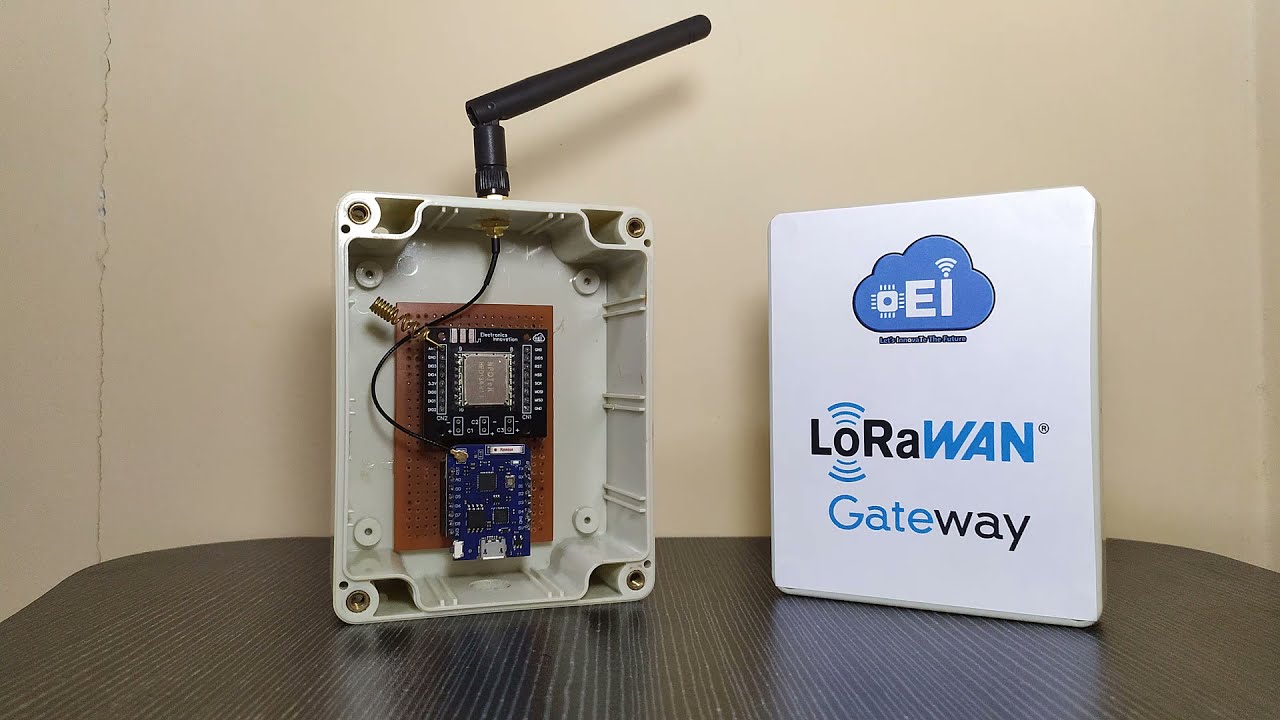Introduction to LoRa Gateway
LoRaWAN is a popular low power wide area network (LPWAN) technology that is ideal for Internet of Things (IoT) applications requiring long range communication at a low bit rate. The basic elements that make up a LoRaWAN network include end-user devices, gateway, network server and application server.
A critical part of any LoRaWAN network is the LoRa gateway that acts as the interface between end-devices in the field and the network server in the cloud. In this article, we will take a deep dive into LoRa gateways – what they are, how they work and different types available in the market.
Gateway Basics
A LoRa Gateway is a wireless router that can communicate with end-devices using the LoRa modulation technique. It receives transmissions from IoT sensors and other end-devices using LoRa modulation and forwards the data to the network server over IP backbone using technologies like Ethernet, WiFi or cellular.
Gateways extend the range of a LoRaWAN network by hopping data from end-devices to the network server. Their key functions include receiving RF packets from end-devices within its coverage area, implementing forward error correction, encrypting payload and joining messages and forwarding data to the network server. They also handledownlink transmissions from the network server to end-devices.
Key Gateway Components
At a high level, a LoRa gateway consists of the following key components:
– LoRa radio module – This is the main RF front-end that transmits and receives payloadss using LoRa modulation scheme. Popular radio modules used include Semtech SX1302/3.
– Microcontroller – It performs MAC layer operations, forwards data between the radio frontend and backbone network, applies cryptographic operations etc. Arm Cortex M3/4/7 MCUs are commonly used.
– Network interface – Gateways have Ethernet, WiFi or cellular interfaces to connect with the IP backbone for uplink/downlink communications with the network server.
– Power source – Gateways are powered either through PoE, mains power or batteries depending on their deployment location. Solar panels may also be used.
– Antenna – Gateways require external antenna like dipole/omni directional antennas to receive signals from a wider area.
Gateway Placement and Density
Proper placement and density of gateways is crucial to ensure good network coverage while keeping costs in check. Some best practices for gateway deployment include:
– Gateways should be placed at high points like rooftops of office/homes with clear Line of Sight to end-devices.
– In urban areas with many obstacles, gateway density of 1 gateway per 0.25-1 sq km is recommended depending on terrain.
– In open rural areas, 1 gateway per 10-50 sq km may suffice depending on device population density.
– Multiple gateways should overlap to some extent to provide redundancy in case one gateway fails.
– Gateway placement tools from vendors can help simulate coverage for optimum locations.
Types of LoRa Gateways
There are different types of LoRa gateways available in the market depending on their form factor, features and intended use cases:
Commercial Outdoor Gateways
These hardened gateways are meant for outdoor installation. Examples include Multitech Conduit, Kerlink Wirnet Station, etc. They have weatherproof enclosures, wide temp support, long range radios, cellular connectivity for rural/industrial use.
Indoor/Commercial Gateways
Compact gateways like Kerlink Coast Gateway are designed for indoor installation in offices/factories with Ethernet backhaul. They have smaller form factors ideal for deployment in density.
Residential Gateways
Gateways such as Kerlink Indoor Gateway or Multitech Access Point are geared for indoor use at homes with WiFi backhaul to access LoRaWAN network. Ideal for smart home and urban sensing applications.
OEM/Custom Gateways
Companies like Anthropic offer customizable gateway kits for developers to build their own gateway solutions. These can be integrated into existing products.
The Future of LoRa Gateways
As LoRaWAN networks scale to support millions of IoT devices globally over the coming years, we can expect continued innovation in gateway technology. Some emerging trends include:
– Integrated Gateways: Convergence of gateway and sensor node functionalities into single packaging will simplify deployments.
– Self-Organizing Networks: Dynamic algorithms for self-configuration of gateways based on network conditions without manual intervention.
– Advanced Analytics: Gateways capable of processing and analyzing data at the edge before sending to cloud for actionable insights with low latency.
– Renewable Power: Wider adoption of energy harvesting, solar power in gateways will make them truly self-powered for remote locations.
– AI/ML at Edge: Edge intelligence capabilities direct in gateways will optimize network performance using predictive techniques.
To sum up, LoRa gateways play a vital role as the intermediary between end-devices and network servers in LoRaWAN architecture. With myriad available options and continued innovation, they will continue to be a driving force for scaling up large IoT deployments globally using low power WAN technologies.




